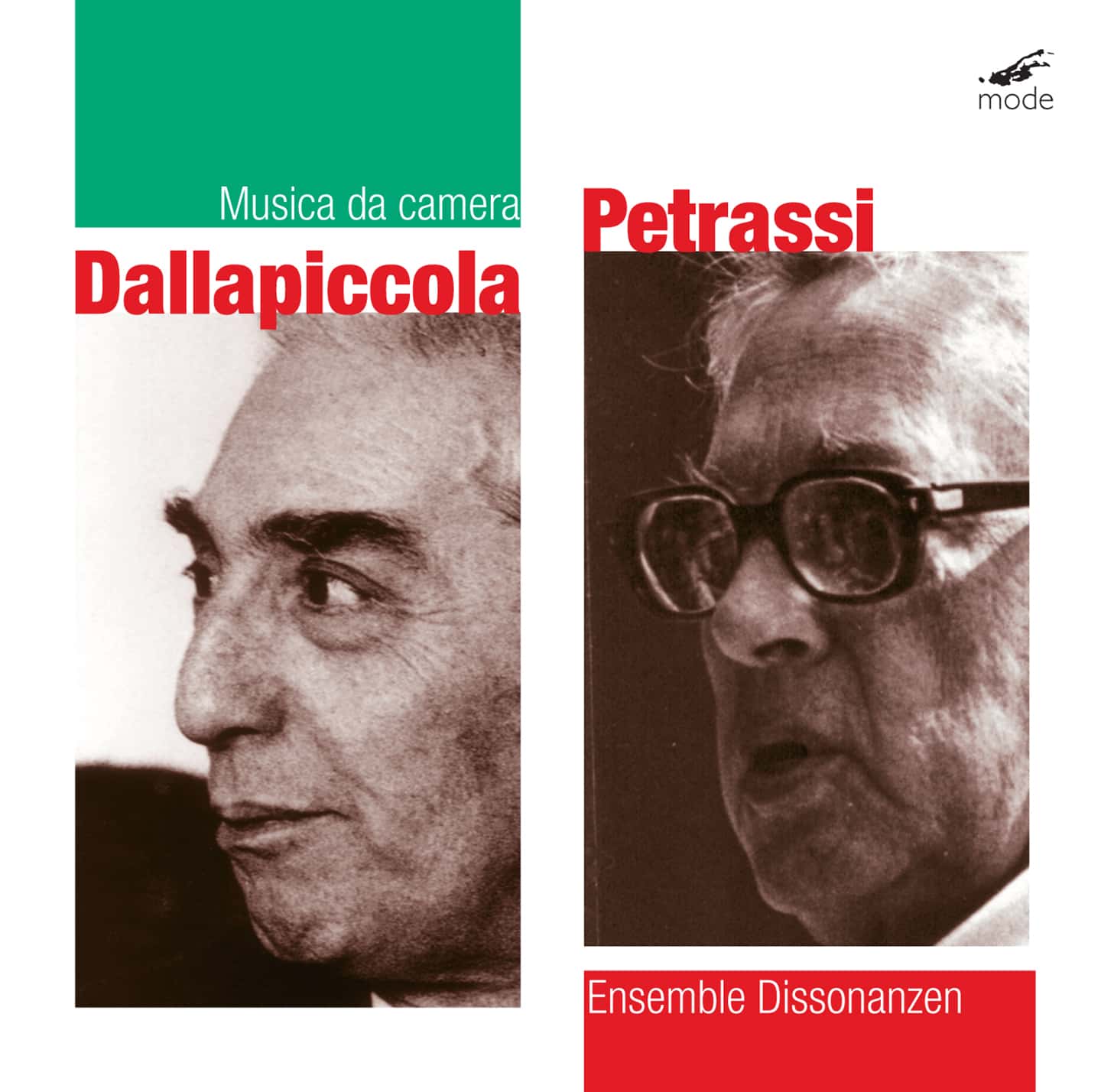GOFFREDO PETRASSI (1904-2003)
Sestina d’autunno “Veni Creator Igor” (1981-82) (16:59)
for mandolin, guitar, viola, cello, double-bass & percussion
LUIGI DALLAPICCOLA (1904-1975)
Quaderno Musicale di Annalibera for piano (1952)
Simbolo (2:46)
Accenti (0:33)
Contrapunctus Primus (1:08)
Linee (0:44)
Contrapunctus Secundus (Canon Contrario Motu) (0:24)
Fregi (1:14)
Andantino amoroso e Contrapunctus Tertius (Canon Cancrizans) (1:02)
Ritmi (1:18)
Colore (0:56)
Ombre (2:24)
Quartina (1:41)
GOFFREDO PETRASSI
Seconda Serenata Trio (1962) (11:19)
for mandolin, guitar & harp
LUIGI DALLAPICCOLA
Tartiniana Seconda (1956)
Divertimento for violin & piano
I – Pastorale (2:18)
II – (Tempo di Bourrée) (1:34)
III – (Presto; leggerissimo) (1:43)
IV – Variazioni
a) Decisamente (0:26)
b) Maestoso (0:56)
c) Tranquillo (1:10)
d) Doloroso (Canon per Augmentationem, Contrario Motu) (1:01)
e) Alla Sarabanda (Canon Cancrizans) (1:00)
f) Deciso; duramente (Canon ad Hypodiapason)
g) Con gagliardia (0:52)
GOFFREDO PETRASSI
Dialogo Angelico for 2 flutes (1948) (3:58)
LUIGI DALLAPICCOLA
Parole di S.Paolo (1964) (6:48)
for mezzo-soprano, 2 flutes, 2 clarinets, viola, cello, harp, percussion, piano/celesta
ENSEMBLE DISSONANZEN
Claudio Lugo, conductor (1, 13, 24)
Cristina Zavalloni, mezzo-soprano (24)
Dallapiccola and Petrassi are often considered the “Heavenly Twins” of 20th century music in Italy. While it is true that they were born in the same year (1904), and together provided the driving force for new Italian music, each composer has his own unmistakable musical and poetic identity.
- This CD, performed by Ensemble Dissonanzen, Naples’ premier new music ensemble, alternates compositions by Petrassi and Dallapiccola, making for a study of contrasts and comparisons.
- Petrassi’s Dialogo angelico, is an ethereal watercolor heralding the sound of his future music. It is imbued with a free flowing Stravinsky-like neomodality, serenely rhythmical and diatonic.
- Quaderno musicale di Annalibera features eleven perfectly crafted miniatures, representing a minuscule amalgam of the Art of Fugue and the Musical Offering, with canons in the style of Bach and the Flemish school.
- Tartiniana seconda, from Dallapiccola’s famous “Tartiniana” series, is an exquisite, virtuoso homage to Tartini.
- Petrassi’s Seconda serenata-Trio is written for the unusual ensemble of harp, guitar and mandolin; Sestina d’autunno “Veni creator Igor”, is also for guitar and mandolin, together with three stringed instruments and percussion. Taken together, they sum up the composer’s special empathy with the abrupt, evanescent sounds of plucked strings. The metallic tinkling of harps, harpsichords, guitars and mandolins are almost a Petrassian trademark.
- Ensemble Dissonanzen is based in Napoli, Italy. The core members are Tommaso Rossi (flute), Ciro Longobardi (piano), Claudio Lugo (saxophone & conductor) and Marco Cappelli (guitar). Trained in classical music, they have had experience in a variety of genres (contemporary music, early music, avantgarde jazz, improvisation, and electronic music).

